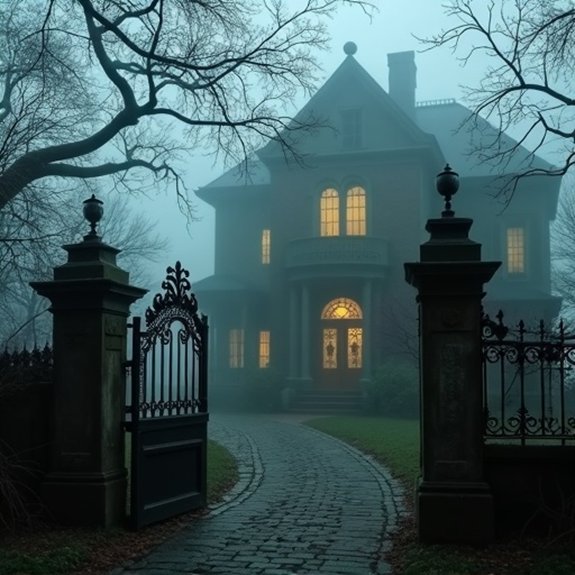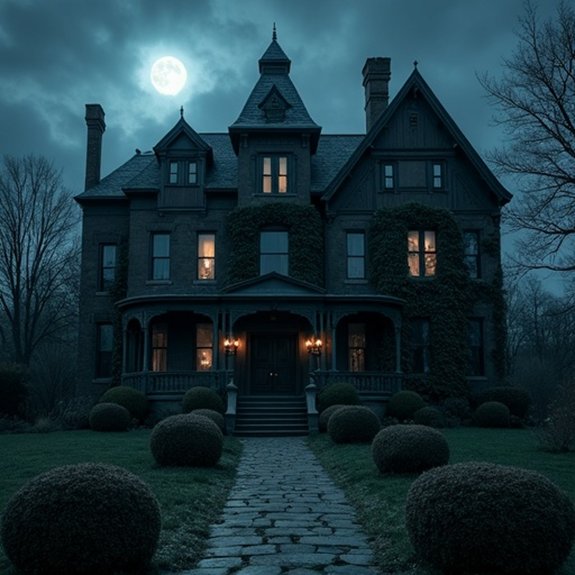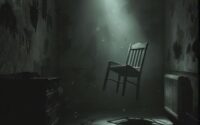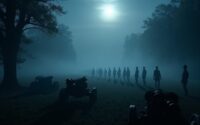Haunting Residences of Famous Authors
The floorboards in Edgar Allan Poe’s Baltimore home still creak at midnight, though no one’s walking them. Literary pilgrims who’ve toured famous authors’ residences often report more than they’d bargained for—cold spots near Dickens’s writing desk, unexplained footsteps in the Brontë Parsonage. These historic homes preserve manuscripts and furniture, but they’ve apparently kept something else too. What connects these supernatural encounters across centuries and continents?
Introduction

While countless tourists flock to see the birthplaces and museums of celebrated writers, the most intriguing literary landmarks are often the authors’ former homes that now harbor ghostly legends. These residences don’t just preserve manuscripts and furniture; they’re rumored to retain the spirits of their famous inhabitants. From Edgar Allan Poe’s Baltimore home to the Brontë Parsonage in Yorkshire, supernatural tales intertwine with literary history, creating destinations that attract both book lovers and paranormal enthusiasts.
Whether these hauntings stem from tragic circumstances, unfinished business, or the sheer creative energy that once filled these spaces, they’ve become inseparable from the authors’ legacies. Visitors report unexplained footsteps, moving objects, and ghostly apparitions that mirror descriptions from the writers’ own works, blurring the lines between fiction and supernatural reality.
Victorian Séances Inspiring Literary Ghosts
Arthur Conan Doyle’s Hampshire home became a hub for mediums after his son’s death in WWI. Despite creating the logical Sherlock Holmes, Doyle championed spiritualism, writing extensively about paranormal encounters he’d witnessed firsthand. The Brontë sisters conducted séances at Haworth Parsonage, seeking their deceased siblings. These sessions inspired the supernatural elements pervading “Wuthering Heights” and “Jane Eyre,” transforming personal grief into Gothic masterpieces.
Notable Cases or Sightings

Ghost sightings at literary landmarks have captivated visitors for decades. At Edgar Allan Poe’s Baltimore home, witnesses report seeing a shadowy figure in period clothing near the author’s former writing desk. The apparition vanishes when approached, leaving behind what some describe as the scent of old paper and ink.
Mark Twain’s Hartford mansion hosts its own spectral resident. Staff members claim they’ve heard typewriter keys clicking in the billiard room where Twain wrote his manuscripts. Security cameras have captured unexplained orbs floating through the author’s study at night.
Perhaps most famous is the Brontë Parsonage in Yorkshire. Visitors frequently report encountering Emily Brontë’s ghost on the stairs, while others hear Charlotte’s footsteps pacing the dining room where she’d written Jane Eyre.
Common Theories or Explanations
Because these haunted literary sites attract thousands of visitors annually, researchers have proposed several explanations for the reported phenomena. Psychologists point to expectation bias—visitors who’ve heard ghost stories arrive primed to interpret ordinary sounds as supernatural. The power of suggestion amplifies when tour guides share dramatic tales in dimly lit rooms.
Environmental factors offer scientific alternatives. Old buildings naturally produce creaking sounds through thermal expansion and settling foundations. Drafts create moving shadows and door movements that visitors mistake for ghostly presences. Infrasound, frequencies below human hearing, can trigger feelings of unease and peripheral hallucinations.
Some theorists suggest residual energy imprints—that intense emotions somehow embed themselves in physical spaces. Skeptics counter that people’s desire to connect with beloved authors drives them to perceive paranormal encounters where none exist.
Frequently Asked Questions
Can I Visit These Haunted Author Residences Today?
Visitors can tour several haunted author residences today. They’ll find Poe’s cottage in the Bronx, Twain’s house in Connecticut, and Hemingway’s Key West home open to the public. Some locations offer ghost tours year-round.
Are There Guided Ghost Tours Available at These Literary Homes?
Yes, several literary homes offer guided ghost tours. The Edgar Allan Poe House in Baltimore hosts supernatural tours, while Mark Twain’s Hartford home features evening ghost walks. Shakespeare’s birthplace in Stratford-upon-Avon also offers paranormal experiences.
Which Author’s Home Has the Most Documented Paranormal Activity?
Edgar Allan Poe’s Westminster Hall and Burying Ground in Baltimore claims the most documented paranormal activity among literary sites. Visitors’ve reported mysterious cognac bottles appearing at Poe’s grave and unexplained cold spots throughout the grounds.
Have Any Current Authors Reported Ghosts in Their Homes?
Several contemporary authors’ve reported ghostly encounters in their homes. Stephen King’s claimed his Bangor mansion harbors spirits, while Neil Gaiman’s mentioned strange occurrences at his properties. Many writers don’t publicize such experiences, fearing credibility issues.
What Equipment Do Investigators Use at These Haunted Literary Sites?
Investigators typically use EMF detectors, digital voice recorders, infrared cameras, and thermal imaging equipment at haunted literary sites. They’ll also employ motion sensors, K2 meters, and spirit boxes to document paranormal activity in authors’ former homes.


